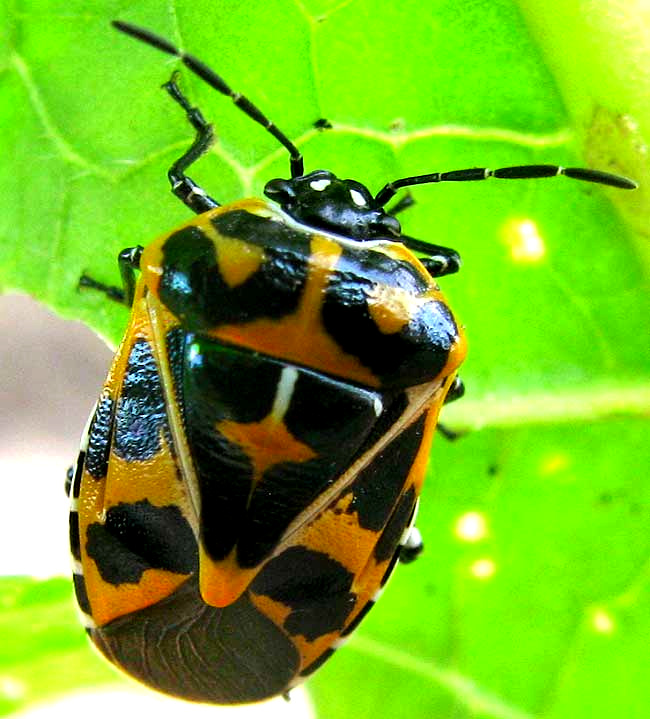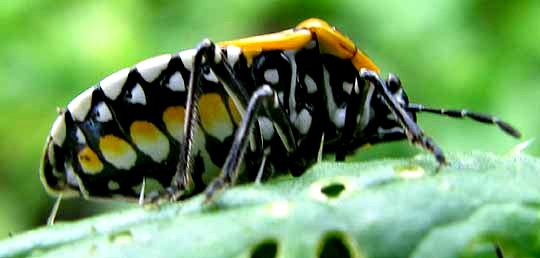Excerpts from Jim Conrad's
Naturalist Newsletter

from the December 2, 2012 Newsletter issued from the valley of the Dry Frio River in northern Uvalde County, southwestern Texas, on the southern border of the Edwards Plateau; elevation ~1750m (~5750 ft); N29.62°, W99.86°; USA
HARLEQUIN BUGS IN MUSTARD GREENS
The prettiest villain of my raised beds of winter-garden mustard greens -- though seen much less frequently seen than the more destructive flea beetles and Cucumber Beetles -- is the Harlequin Bug, MURGANTIA HISTRIONICA, as shown above.
A view from the side shows that the top's ornamentation continues below:

The Harlequin Bug's bright coloration and bold markings are warnings to birds and other predators to stay away. In Nature often it's the case that the most boldly patterned and/or colorful organisms make it easy for predators to recognize and remember them as being somehow dangerous. However, a large proportion of such attention-calling organisms are bluffing, having no significant defenses at all. That's the case with Harlequin Bugs. You can pick off as many as you want of them and thump them to your wandering hens, or feed them to your pet lizard.
Harlequin Bugs are members of the True Bug order, the Hemiptera, and the family of the stink bugs and shield bugs, the Pentatomidae. Like other True Bugs, the Harlequin bears a strawlike proboscis that can be inserted into a leaf so the plant's juices can be sucked up through it. This results in discolored blotches on the plant, and large numbers of Harlequins on a plant can even kill it.
Harlequin Bugs are native to Mexico and Central America, so in the US they are invasive, having been first detected in Texas in 1864. Now they occur throughout the US and even in parts of Canada adjacent to New England.